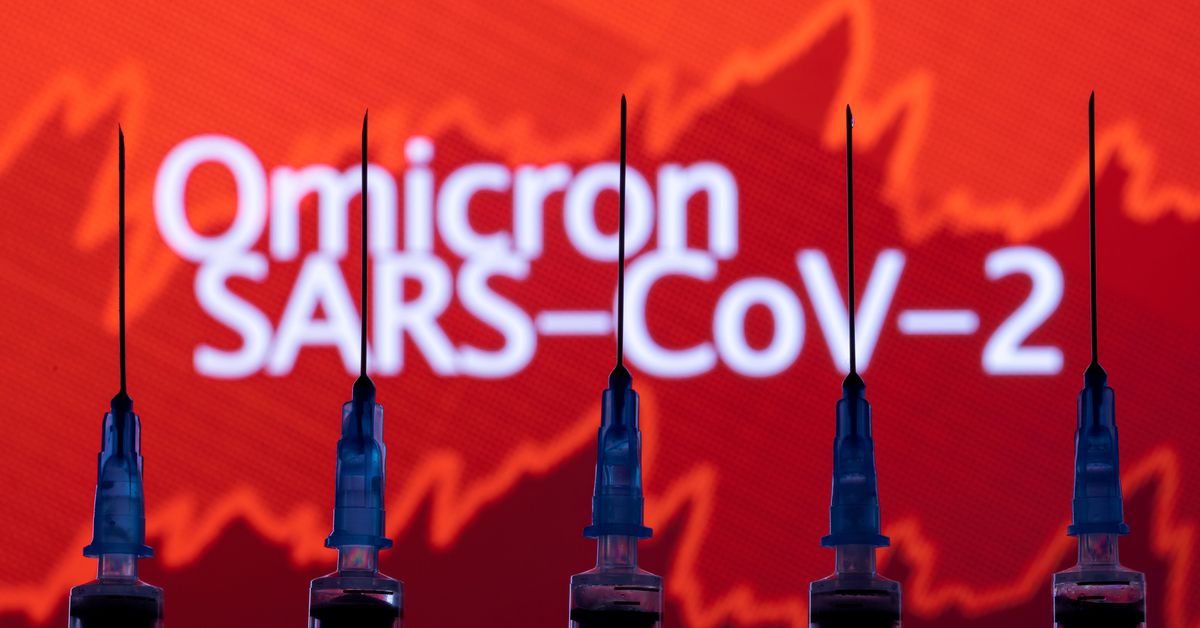HONG KONG, Dec 1 (Reuters) – U.S. and European share futures jumped on Wednesday, oil rose and Asian stocks were heading for their best day in nearly two months as traders reversed course after a sharp selloff the day before took the regional benchmark to a 12-month low.
Competing for the limelight, U.S. Treasury yields climbed steadily after U.S. Fed chair Jerome Powell signalled the Fed may speed up the pace of its bond-buying taper at its meeting later this month.
MSCI’s broadest index of Asia-Pacific shares outside Japan (.MIAPJ0000PUS) rose 1.3%, which would be its best daily gain since early October, as traders decided Tuesday’s declines, which sent the benchmark to its lowest since November 2020, had gone too far.
Register now for FREE unlimited access to reuters.com
Register
While that helped the regional benchmark walk back this week’s selloff, it is still sitting about 2% below Thursday’s close before news of the latest variant of the new coronavirus derailed markets.
The share rally in Asia looked set to continue into European and U.S. trading. Nasdaq 100 futures rose 1.35%, S&P500 futures gained 0.78%, Euro Stoxx 50 futures advanced 0.63% and FTSE futures rose 0.67%.
“As the market really oversold and over-digested Omicron, it makes sense for asset prices to rebound,” said Edison Pun, senior market analyst at Saxo Markets.
On Tuesday, MSCI’s gauge of stocks across the globe (.MIWD00000PUS) had shed 1.5%, jolted by a warning from drugmaker Moderna that existing vaccines are unlikely to be as effective against the Omicron variant as they are against other strains.
Hong Kong (.HSI) rose 1.2% and Korea (.KS11) 2.2% to lead Wednesday’s gains, although both were recovering from 12-month lows hit the day before.
Oil also rebounded after steep falls in the previous session, ahead of a meeting by the Organization of the Petroleum Exporting Countries (OPEC). read more
U.S. West Texas Intermediate (WTI) crude futures rose 2.5%, to $67.86 a barrel. Brent crude futures gained 2.7%, to $71.12 a barrel.
FED IN FOCUS
The other main issue top of investors’ minds was the speed at which the U.S. Federal Reserve will taper its massive stimulus programme, and when it will hike interest rates.
“At present the market focus has been on Omicron and the potential that can disrupt the world, but the real focus should be on the Fed and the rate policy. That’s the biggest shock to come out of the last day or so,” said Kerry Craig global market strategist at JPMorgan Asset Management.
On Tuesday, Powell said U.S. central bankers in December will discuss whether to end their bond purchases a few months earlier than had been anticipated, pointing to a strong economy, stalled workforce growth, and high inflation that is expected to last into mid-2022. read more
That pushed U.S. Treasury yields higher, especially at the short end of the curve.
The yield on two-year notes , which reflects short-term interest rate expectations, rose to as high as 0.6060% on Wednesday, up from as low as 0.4410% on Tuesday, when traders were speculating the new variant could lead to a more dovish Fed.
Benchmark 10-year notes also sold off , last yielding 1.4800%, up from Tuesday’s two-and a half month low of 1.4443%.
Rising yields caused the dollar to steady against most peers and gain ground on the Japanese currency, rising to 113.4 yen , with the safe haven yen hurt by the risk friendlier mood. FRX
That sentiment also helped the Aussie dollar which rose 0.6% from Tuesday’s 32 month low.
Gold, despite all the excitement, saw little safe haven demand with the spot price at $1,779 an ounce, up 0.3%.
Register now for FREE unlimited access to reuters.com
Register
Reporting by Alun John; editing by Richard Pullin
Our Standards: The Thomson Reuters Trust Principles.
